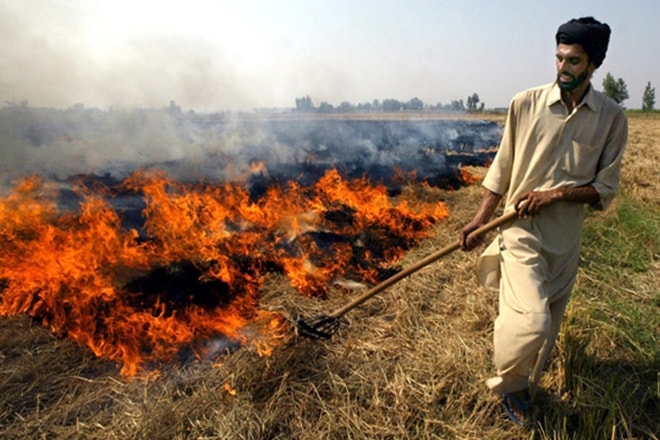Delhi pollution: The havoc created by stubble burning in Punjab Haryana, adjacent states of the national capital is a deplorable condition known to all. The crop burning which is mainly practiced in the states of Punjab, Haryana and parts of western Uttar Pradesh and Uttarakhand where each season, 34 million tonnes (mt) of paddy straw are produced. The harvest is done using combine harvesters. Out of 34 million, some 23 mt is from combine harvested fields and is burnt within less than a month’s span between mid-October and around November 10. Much is being said to curb pollution caused by the stubble burning, so the question arises- is there any alternative to the burning of the paddy straws which will address the environmental problem as well as be effective for the farmers. The answer is yes! One way out is to reduce the paddy crop’s duration, which, in turn, increases the farmer’s time to prepare for the sowing of the next wheat crop. Such breeding for shorter durations is already happening.
According to G S Mangat, head of the department of plant breeding and genetics at Punjab Agricultural University (PAU) in Ludhiana, Pusa-44 covered almost 40% of the state’s total non-basmati paddy area five years ago. This year, its share was only 18%, and that of PR-121, a variety that matures in 140 days, was 28%. PAU has recently released an even shorter-duration (125-day) variety, PR-126. It gives an average 30 quintals of paddy per acre, which is close to the corresponding yields of PR-121 (30.5 quintals) and Pusa-44 (32 quintals), Indian Express reported. Breeding for lesser duration can help extend planting window for wheat. But that is not the ultimate solution since it does not address to the problem of stubble. For the farmer, burning remains the least-cost method for getting useless straw off his field.
The most viable technology seems to be what is called Turbo Happy Seeder (THS). This is a tractor-mounted machine that basically cuts and lifts the standing stubble, drills the wheat seeds into the bare soil, and deposits the straw over the sown area as a mulch cover. The THS not only dispenses with the need for burning residue, but actually allows wheat to be planted even on fields containing straw. To top it all, the time saving is huge. the problem with THS is that it couldn’t take care of the loose straw harvested by the combine.For this, PAU has developed a Super-Straw Management System (S-SMS), which is an attachment that can be fitted on any combine harvester. A THS costs roughly Rs 1.3 lakh, while the S-SMS adds another Rs 1.2 lakh to the Rs 18 lakh-plus price for a combine. The machines need not be used by the farmers and can be used on custom-hiring basis. This will not only save time but money. The good news, there is already some progress on the ground.

